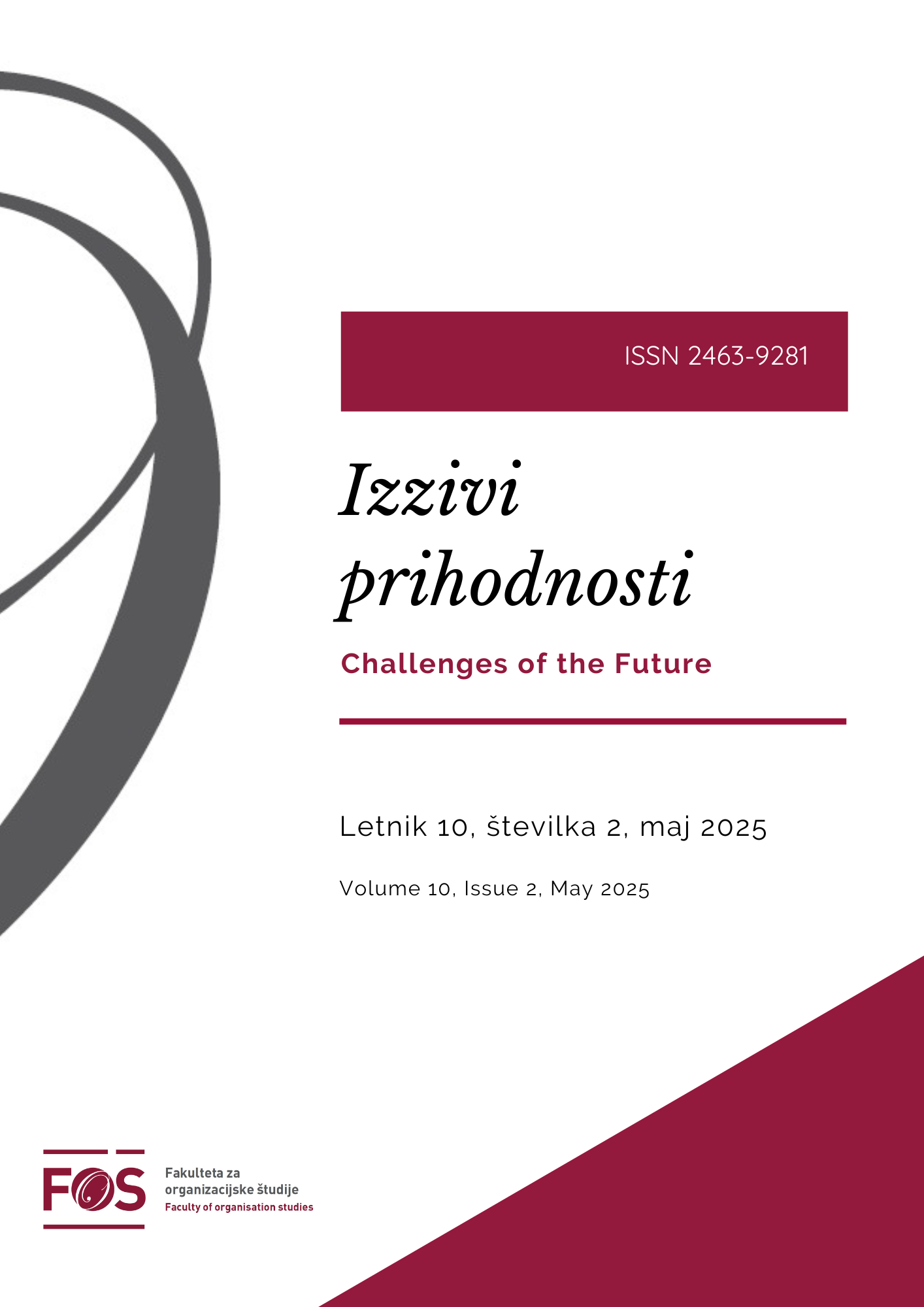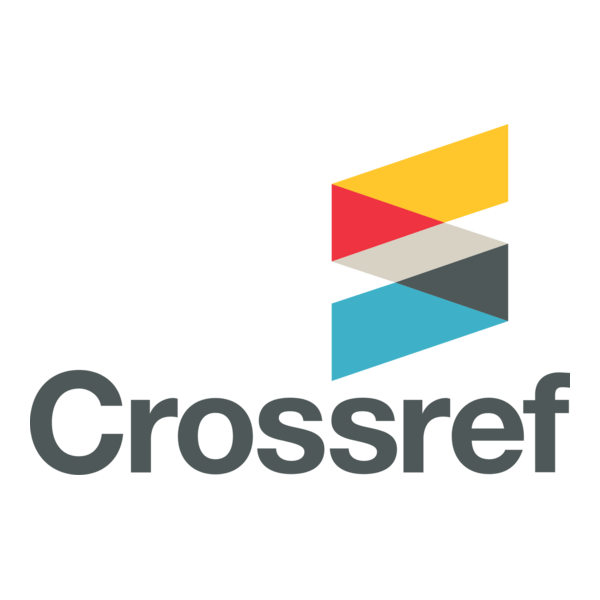Vrednotenje notranje učinkovitosti slovenskega sistema terciarnega izobraževanja
DOI:
https://doi.org/10.37886/ip.2025.003Ključne besede:
sistemi terciarnega izobraževanja, metoda DEA, države članice OECD, financiranje izobraževanja, diplomanti, učinkovitostPovzetek
Raziskovalno vprašanje (RV): v članku podajamo odgovor na vprašanje koliko je je slovenski sistem terciarnega izobraževanj učinkovit v primerjavi z drugimi sistemi terciarnega izobraževanja v državah članicah OECD, ter kateri so tisti elementi, ki jih je mogoče v slovenskem sistemu še izboljšati oz. optimizirati za doseganje optimalne relativne učinkovitosti.
Namen: raziskava poskuša osvetliti slovenski sistem terciarnega izobraževanja z vidika učinkovitega delovanja ter ga primerjati s sistemi ostalih držav članic OECD s ciljem, da se identificira tista področja, v katerih slovenski sistem ne dosega ustreznih rezultatov, ki bi omogočali popolnoma učinkovito delovanje.
Metoda: Z uporabo teoretičnih osnov za identificiranje ključnih inputov in outputov ter sekundarnih podatkov iz mednarodnih virov smo izvedli analizo relativne učinkovitosti z uporabo metode DEA, da bi proučili notranjo učinkovitost sistemov terciarnega izobraževanja v 29 državah OECD, za katere so bili na voljo celoviti podatki v obdobju študije.
Rezultati: Rezultati kažejo, da slovenski sistem terciarnega izobraževanja ni dosegel popolne učinkovitosti v nobenem od štirih uporabljenih modelov. Po stopnji relativne učinkovitosti se je Slovenija uvrstila med 20. in 25. mesto med 29 proučevanimi državami članicami OECD. Za doseganje popolne učinkovitosti bi bilo potrebno izboljšati rezultate outputov tako na področju pedagoške kot raziskovalne dejavnosti.
Organizacija: Rezultati raziskave lahko predstavljajo uporabno orodje za doseganje relativne učinkovitosti odločevalcem na državni ravni kot tudi managerjem posameznih inštitucij terciarnega izobraževanja
Družba: Doseganje učinkovitosti na področju terciarnega izobraževanja je pomembno za širšo družbo predvsem z vidika oseb, ki se vključujejo v proces kot tudi z vidika širšega vpliva, ki ga ima terciarno izobraževanje na gospodarstvo in družbo
Originalnost: To je prva raziskava, ki opravi pregled dosedanjih študij, ki obravnavajo učinkovitost sistemov terciarnega izobraževanja z vidika analize rezultatov slovenskega sistema terciarnega izobraževanja ter podrobneje ugotavlja doseganje učinkovitosti slovenskega sistema terciarnega izobraževanja.
Omejitve/nadaljnje raziskovanje: Raziskava temelji na sekundarnih podatkih, ki so bili pridobljeni iz mednarodnih baz. Proučevani vzorec ni naključno izbran ampak temelji na tistih državah, za katere so bili za celotno obdobje na razpolago popolni podatki. Raziskavo je smiselno nadgraditi s širšim vzorcem držav ter z uporabo drugih oz. dodatnih inputov in outputov, predvsem s tistimi, ki odražajo kakovostno komponento uporabljenih inputov in outputov.
Ključne besede: učinkovitost, sistemi terciarnega izobraževanja, metoda DEA, države članice OECD, financiranje izobraževanja, diplomanti.
Literatura
Agasisti, T. (2009). Performances and spending efficiency in higher education: A European comparison through non‐parametric approaches. Education Economics, 19(2), 199-224. https://doi.org/10.1080/09645290903094174
Agasisti, T. (2014). The efficiency of public spending on education: An empirical comparison of EU countries. European Journal of Education, 49(4), 543-557. https://doi.org/10.1111/ejed.12069
Ahec Š. A., Deskar-Škrbić M., & in Šonje, V. (2018). Efficiency of public expenditure on education: Comparing Croatia with other NMS. MPRA paper 85152. https://mpra.ub.uni-muenchen.de/85152/1/MPRA_paper_85152.pdf
Aksnes, D. W., Langfeldt, L., & Wouters, P. (2019). Citations, citation indicators, and research quality: An overview of basic concepts and theories. SAGE Open, 9(1), 1-17. https://doi.org/10.1177/2158244019829575
Aristovnik, A., & Obadić, A. (2011). The funding and efficiency of higher education in Croatia and Slovenia: a non-parametric comparison. Amfiteatru Economic , 13(2011), 362-376. https://mpra.ub.uni-muenchen.de/31466/
Aubyn, M. S., Pina, Á. M., Garcia, F., & Pais, J. (2009). Study on the efficiency and effectiveness of public spending on tertiary education. European Commission: Economics paper 390. https://ec.europa.eu/economy_finance/publications/pages/publication16267_en.pdf
Banker, R. D., Charnes, A., & Cooper, W. W. (1984). Some models for estimating technical and scale inefficiencies in data envelopment analysis. Management Science, 30(9), 1078-1092. https://www.jstor.org/stable/2631725
Bevc, M. (1999). Financiranje, učinkovitost in razvoj izobraževanja. Radovljica: Didakta.
Bevc, M., & Uršič, S. (2008). Relations between funding, equity, and efficiency of higher education. Education Economics, 16, 229 - 244. https://doi.org/10.1080/09645290802338037
Bloom, D. E., Canning, D., & Chan, K. J. (2006). Higher education and economic development in Africa. Boston: Harvard University. https://www.edu-links.org/sites/default/files/media/file/BloomAndCanning.pdf
Bonaccorsi, A., Daraio, C., & Simar, L. (2014). Efficiency and economies of scale and scope in European universities: A directional distance approach. ISBA Discussion Paper, 2014/20, 1-30. https://doi.org/10.1016/j.joi.2015.03.002
Calderon, A. J. (2018). Massification of higher education revisited. http://cdn02.pucp.education/academico/2018/08/23165810/na_mass_revis_230818.pdf
Charnes, A., Cooper, W. W., & Rhodes, E. (1978). Measuring the efficiency of decision making units. European Journal of Operational Research, 2(6), 429-444. https://doi.org/10.1016/0377-2217(78)90138-8
Choong, K. K., & Leung, P. W. (2021). A critical review of the precursors of the knowledge economy and their contemporary research: Implications for the computerized new economy. Journal of the Knowledge Economy, 12(1), 1-38. https://link.springer.com/article/10.1007/s13132-021-00734-9
Coelli, T. J., Rao, D. S. P., O'Donnell, C. J., & Battese, G. E. (2005). An introduction to efficiency and productivity analysis (2nd ed.). New York: Springer Science+Business Media. https://dl.icdst.org/pdfs/files/3a67240be4e2274e4c95655ec16931de.pdf
De Witte, K., & López-Torres, L. (2017). Efficiency in education: A review of literature and a way forward. Journal of the Operational Research Society, 68(4), 339-363. https://doi.org/10.1057/jors.2015.92
Drucker, P. F. (1993). Post-capitalist society. New York: Harper Business.
Dyson, R. G., Allen, R., Camanho, A. S., Podinovski, V. V., Sarrico, C. S., & Shale, E. A. (2001). Pitfalls and protocols in DEA. European Journal of Operational Research, 132(2), 245-259. https://doi.org/10.1016/S0377-2217(00)00149-1
Estremann, T., & Kupriyanova, V. (2019). Efficiency, effectiveness, and value for money at universities. Brussels: European University Association. https://www.eua.eu/downloads/publications/efficiency%20effectiveness%20and%20value%20for%20money.pdf
European Commission. (2024). Education and Training Monitor 2024. Publications Office of the European Union. https://op.europa.eu/webpub/eac/education-and-training-monitor/en/country-reports/slovenia.html.
Farrell, M. J. (1957). The measurement of productive efficiency. Journal of the Royal Statistical Society, Series A, 120(3), 253-281. https://www.jstor.org/stable/2343100
Ghaffarzadegan, N., Xue, Y., & Larson, R. C. (2017). Work-education mismatch: An endogenous theory of professionalization. European Journal of Operational Research, 261(3), 1085-1097. https://doi.org/10.1016/j.ejor.2017.02.041
Giménez, V., Prior, D., & Thieme, C. (2007). Technical efficiency, managerial efficiency, and objective-setting in the educational system: An international comparison. Journal of the Operational Research Society, 58(8), 996-1007. https://doi.org/10.1057/palgrave.jors.2602213
Golany, B., & Roll, Y. (1989). An application procedure for DEA. Omega-International Journal of Management Science, 17(3), 237-250. https://doi.org/10.1016/0305-0483(89)90029-7
Hanusek, E. A. (2005). Pseudo-science and a sound basic education: Voodoo statistics in New York. http://hanushek.stanford.edu/publications/pseudo-science-and-sound-basic-education-voodoo-statistics-new-york
Jelić, O.N., & Kedžo, M.G. (2018). Efficiency vs effectiveness: an analysis of tertiary education across Europe. Public sector economics. 42 (4): 318-414. https://www.pse-journal.hr/en/archive/efficiency-vs-effectiveness-an-analysis-of-tertiary-education-across-europe_3463/full-article/
Johnes, J. (2005). Data envelopment analysis and its application to the measurement of efficiency in higher education. Economics of Education Review, 25(3), 273-288. https://doi.org/10.1016/j.econedurev.2005.02.005
Johnson, I. Y. (2010). Class size and student performance at a public research university: A cross-classified model. Research in Higher Education, 51(7), 701-723. https://link.springer.com/article/10.1007/s11162-010-9179-y
Kaneko, M. (2006). Marketisation of higher education – trends, issues, and prospects. http://ump.p.u-tokyo.ac.jp/crump/resource/crump_wp_no1.pdf.
Lane, J. (2012). Higher education and economic competitiveness. In J. Lane & B. Johnstone (Eds.), Colleges and universities as economic drivers: Measuring higher education's contribution to economic development. Albany: SUNY Press.
Liu, F., & Xu, H. (2017). Effects of educational efficiency on national competitiveness based on cross-national data. Education Sciences, 7(3), 81-93. https://doi.org/10.3390/educsci7040081
McMahon, W. W. (1982). Efficiency and equity criteria for educational budgeting and finance. In W. McMahon & T. Geske (Eds.), Financing education: Overcoming inefficiency and inequity (pp. 1-22). Urbana: University of Illinois Press.
Mihaljević Kosor, M. (2013). Efficiency measurement in higher education: Concepts, methods, and perspective. Procedia - Social and Behavioral Sciences, 106, 1031-1038. https://doi.org/10.1016/j.sbspro.2013.12.117
Mihaljević, K. M., Malešević, P. L., & Golem, S. (2019). Efficiency of public spending on higher education: a data envelopment analysis for EU-28. Problems of Education in the 21st Century 77 (3): 396-409. https://www.scientiasocialis.lt/pec/node/files/pdf/vol77/396-409.Mihaljevic%20Kosor_Vol.77-3_PEC.pdf
Miningou, É. W., & Tapsoba, S. J. (2020). Education systems and foreign direct investment: Does external efficiency matter? Journal of Applied Economics, 23(3), 583-599. https://doi.org/10.1080/15140326.2020.1797337
OECD. (1996). The knowledge-based economy. Paris: OECD Publishing. https://one.oecd.org/document/OCDE/GD%2896%29102/En/pdf
OECD. (2024). Education at a glance 2024. Paris: OECD Publishing. https://www.oecd.org/en/publications/education-at-a-glance-2024_c00cad36-en.html
Olssen, M., & Peters, M. A. (2005). Neoliberalism, higher education, and the knowledge economy: From the free market to knowledge capitalism. Journal of Education Policy, 20(3), 313-345. https://doi.org/10.1080/02680930500108718
Rothschild, M. L., & White, L. J. (1995). The analytics of the pricing of higher education and other services in which the customers are inputs. Journal of Political Economy, 103(3), 573-586. https://www.jstor.org/stable/2138699
Saljoughian, M., Ghandehari, M., Shirouyehzad, H., Dabestani, R., & Balouei, H. (2013). Performance evaluation of OECD countries by data envelopment analysis based on science and technology factors. Journal of Applied Science and Engineering Management, 1(1), 24-35.
Salas‐Velasco, M. (2019). The technical efficiency performance of higher education systems based on data envelopment analysis with an illustration for the Spanish case. Educational Research for Policy and Practice, 19(2), 159-180. https://link.springer.com/article/10.1007/s10671-019-09254-5
Salerno, C. (2003). What we know about the efficiency of higher education institutions: The best evidence. Enschede: Center for Higher Education Policy Studies (CHEPS). https://www.minocw.nl/documenten/bhw-99-bgo99.pdf
Scheerens, J. (2011). Perspectives on educational quality. In J. Scheerens, H. Luyten, & J. van Ravens (Eds.), Perspectives on educational quality – Illustrative outcomes on primary and secondary schooling in the Netherlands (pp. 1-25). Dordrecht: Springer. https://link.springer.com/book/10.1007/978-94-007-0926-3
Sinuany-Stern, Z., & Hirsh, A. (2021). The relative efficiencies of higher education in OECD countries. International Series in Operations Research & Management Science, 12(1), 481-512. https://link.springer.com/chapter/10.1007/978-3-030-74051-1_16
Stefanova, K. (2019). New Approach to Evaluation of the Efficiency of Higher Education Expenditure in Regard to Quality Achieved (Evidence from Selected Countries from Central and Eastern Europe). Political Economy: Government Expenditures & Related Policies eJournal (2019): 25-34. https://papers.ssrn.com/sol3/papers.cfm?abstract_id=3537493
Stefanova, K. & Velichkov, N. (2020). Analysis of the Efficiency of Tertiary Education Expenditure in European Union Member States from Central and Eastern Europe: An Efficiency Frontier Approach. South-Eastern Europe Journal of Economics 18 (2020): 115-128. https://www.asecu.gr/Seeje/issue34/issue34-stefanova-ongan.pdf
Sum, N.-L., & Jessop, B. (2012). Competitiveness, the knowledge-based economy, and higher education. Journal of the Knowledge Economy, 4(1), 24-44. https://link.springer.com/article/10.1007/s13132-012-0121-8
Tajnikar, M. (2006). Mikroekonomija (2nd ed.). Ljubljana: Ekonomska fakulteta.
Warning, S. (2004). Performance differences in German higher education: Empirical analysis of strategic groups. Review of the industrial organization. 24(2004), 393 - 408 https://www.jstor.org/stable/41799192
Yotova, L., & Stefanova, K. (2017). Efficiency of Tertiary Education Expenditure in CEE Countries: Data Envelopment Analysis. AARN: Economic alternatives, 3 (2017), 352 – 364. https://papers.ssrn.com/sol3/papers.cfm?abstract_id=3099398
Dodatne datoteke
Objavljeno
Kako citirati
Številka
Rubrike
Licenca
Avtorske pravice (c) 2025 Sandi Vrabec, Borut Kodrič

To delo je licencirano pod Creative Commons Priznanje avtorstva-Deljenje pod enakimi 4.0 mednarodno licenco.
![]()








